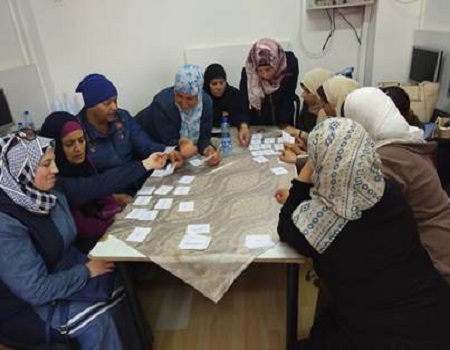
Women in the Arab community have higher rates of heart disease than the general community, and they tend to become ill at much younger ages. Looking to uncover the reasons for those statistics, researchers from the Hadassah Medical Organization’s Linda Joy Pollin Cardiovascular Wellness Center for Women went out into the community to learn what challenges those women face as they seek to care for themselves.
Three focus groups were conducted between June and August 2019 for Arab women aged 26 to 50 who live in different regions in East Jerusalem. Here are some of the takeaways from the focus groups:
- The women reported great difficulty in communicating with medical staff, especially with physicians, and with understanding their instructions and asking questions.
- Doctors don’t stay long in the same place or position and do not discuss screening tests.
- A lot of medical information is available in Hebrew and English, but not in Arabic.
- Many women do not understand their blood-test results.
- Many women avoid testing in fear of what the results may show.
- Women lack knowledge regarding their rights within the medical system and don’t know where to seek reliable medical advice.
- Many women suffer damage from passive smoking because their husbands smoke inside the home.
- Many women have difficulty taking care of themselves because of very little free time, and they exhibit high levels of stress, emotional eating, and social isolation.
Using those data the Pollin Center researchers are working to adapt their health literacy intervention program to address women from this culture. Interactive workshops and discussion groups will utilize the “teach-back” method in which participants are asked to state, in their own words, important information, all of which ensures comprehension.
Some of the highlights of the new program include discussing patient-doctor interaction and patient rights, such as how to prepare a list of questions for the doctor and why it is important to share family history; learning how to interpret certain measures, such as HDL, LDL, and BMI; understanding why screening tests are important; recognizing the signs and symptoms of a “woman’s” heart attack; and increasing awareness of the dangers of both active and passive smoking.
